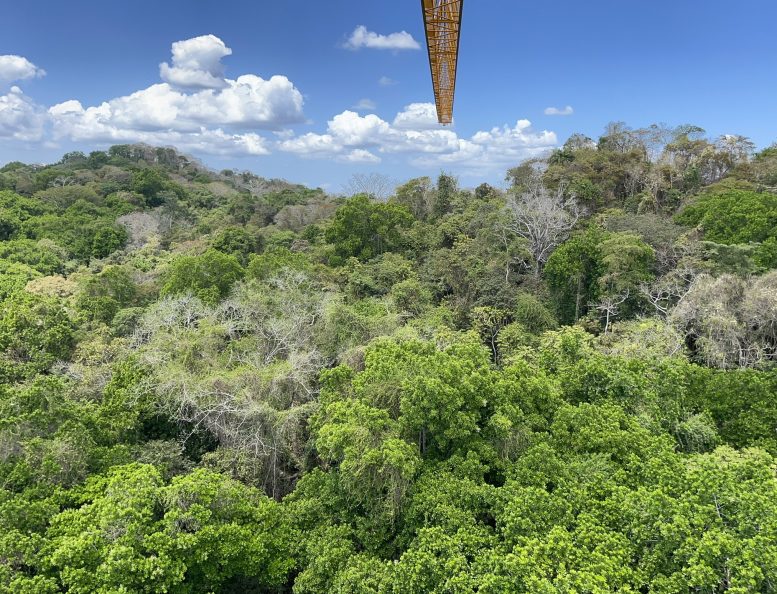

New research shows plants absorb 31% more CO2 than previously estimated, raising the global GPP to 157 petagrams per year. Using carbonyl sulfide as a proxy for photosynthesis, this study highlights tropical rainforests’ critical role as carbon sinks and stresses the importance of accurate photosynthesis modeling for climate predictions.
A new assessment by scientists reveals that plants worldwide are absorbing about 31% more carbon dioxide than previously believed. Published in the journal Nature, this research is expected to enhance Earth system models used to forecast climate trends and underscores the critical role of natural carbon sequestration in mitigating greenhouse gas emissions.
The amount of CO2 removed from the atmosphere via photosynthesis from land plants is known as Terrestrial Gross Primary Production, or GPP. It represents the largest carbon exchange between land and atmosphere on the planet. GPP is typically cited in petagrams of carbon per year. One petagram equals 1 billion metric tons, which is roughly the amount of CO2 emitted each year from 238 million gas-powered passenger vehicles.
Improved Estimates Using New Models
A team of scientists led by Cornell University, with support from the Department of Energy’s Oak Ridge National Laboratory, used new models and measurements to assess GPP from the land at 157 petagrams of carbon per year, up from an estimate of 120 petagrams established 40 years ago and currently used in most estimates of Earth’s carbon cycle.
Researchers developed an integrated model that traces the movement of the chemical compound carbonyl sulfide, or OCS, from the air into leaf chloroplasts, the factories inside plant cells that carry out photosynthesis. The research team quantified photosynthetic activity by tracking OCS. The compound largely follows the same path through a leaf as CO2, is closely related to photosynthesis, and is easier to track and measure than CO2 diffusion. For these reasons, OCS has been used as a photosynthesis proxy at the plant and leaf levels. This study showed that OCS is well suited to estimate photosynthesis at large scales and over long periods of time, making it a reliable indicator of worldwide GPP.

The team used plant data from a variety of sources to inform model development. One of the sources was the LeafWeb database, established at ORNL in support of the DOE Terrestrial Ecosystem Science Scientific Focus Area, or TES-SFA. LeafWeb collects data about photosynthetic traits from scientists around the world to support carbon cycle modeling. The scientists verified the model results by comparing them with high-resolution data from environmental monitoring towers instead of satellite observations, which can be hindered by clouds, particularly in the tropics.
Key to the new estimate is a better representation of a process called mesophyll diffusion — how OCS and CO2 move from leaves into chloroplasts where carbon fixation occurs. Understanding mesophyll diffusion is essential to figuring out how efficiently plants are conducting photosynthesis, and even how they might adapt to changing environments.
The Importance of Mesophyll Conductance
Lianhong Gu, co-author, photosynthesis expert, and distinguished staff scientist in ORNL’s Environmental Sciences Division, helped develop the project’s mesophyll conductance model, which represents numerically the diffusion of OCS in leaves, as well as the linkage between OCS diffusion and photosynthesis.
“Figuring out how much CO2 plants fix each year is a conundrum that scientists have been working on for a while,” Gu said. “The original estimate of 120 petagrams per year was established in the 1980s, and it stuck as we tried to figure out a new approach. It’s important that we get a good handle on global GPP since that initial land carbon uptake affects the rest of our representations of Earth’s carbon cycle.”
“We have to make sure the fundamental processes in the carbon cycle are properly represented in our larger-scale models,” Gu added. “For those Earth-scale simulations to work well, they need to represent the best understanding of the processes at work. This work represents a major step forward in terms of providing a definitive number.”
Implications for Tropical Rainforests and Future Climate Predictions
Pan-tropical rainforests accounted for the biggest difference between previous estimates and the new figures, a finding that was corroborated by ground measurements, Gu said. The discovery suggests that rainforests are a more important natural carbon sink than previously estimated using satellite data.
Understanding how much carbon can be stored in land ecosystems, especially in forests with their large accumulations of biomass in wood, is essential to making predictions of future climate change.
“Nailing down our estimates of GPP with reliable global-scale observations is a critical step in improving our predictions of future CO2 in the atmosphere, and the consequences for global climate,” said Peter Thornton, Corporate Fellow and lead for the Earth Systems Science Section at ORNL.
The results of this study point to the importance of including key processes, such as mesophyll conductance, in model representations of photosynthesis. DOE’s Next Generation Ecosystem Experiments in the Tropics has the goal of advancing model predictions of tropical forest carbon cycle response to climate change. These results can inform new model development that will reduce uncertainty in predictions of tropical forest GPP.
Reference: “Terrestrial photosynthesis inferred from plant carbonyl sulfide uptake” by Jiameng Lai, Linda M. J. Kooijmans, Wu Sun, Danica Lombardozzi, J. Elliott Campbell, Lianhong Gu, Yiqi Luo, Le Kuai and Ying Sun, 16 October 2024, Nature.
DOI: 10.1038/s41586-024-08050-3
In addition to Cornell’s School of Integrative Plant Sciences, other collaborators on the project were Wageningen University and Research of The Netherlands, Carnegie Institution for Sciences, Colorado State University, University of California Santa Cruz, and the NASA Jet Propulsion Laboratory.
Support came from Cornell, the National Science Foundation, and the ORNL TES-SFA, sponsored by DOE’s Office of Science Biological and Environmental Research program.